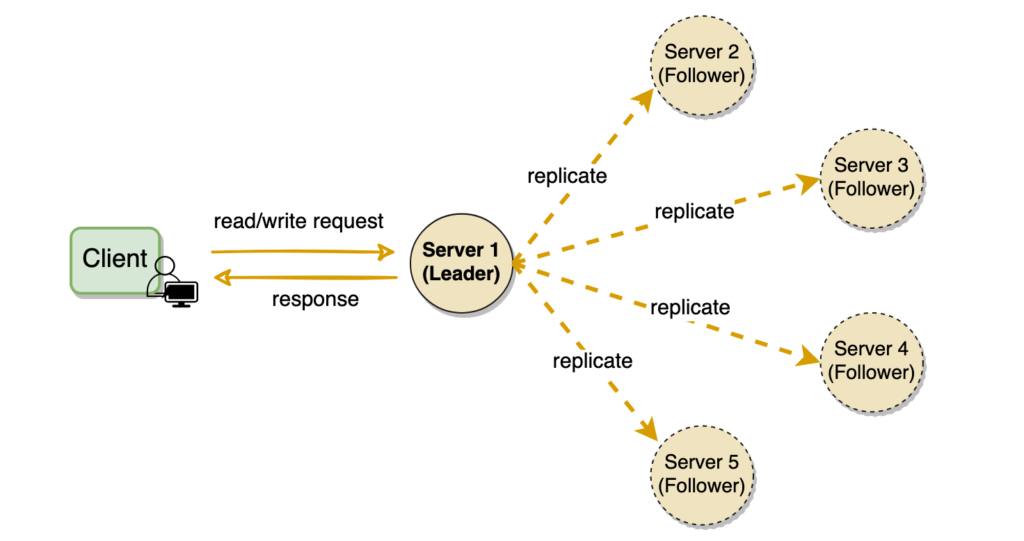Leader and Follower Pattern
In this tutorial, we are going to discuss about Leader and Follower Pattern in system design. The Leader and Follower pattern, also known as the “Master and Slave” pattern or “Primary and Secondary” pattern, is a design pattern commonly used in distributed systems and concurrency control to achieve fault tolerance, load balancing, and high availability.
In this pattern, one node or process is designated as the leader, master, or primary, while the other nodes or processes are designated as followers, slaves, or replicas. The leader is responsible for coordinating and managing the overall system operation, while the followers replicate the leader’s state or data and provide backup or redundant capacity.
Let’s learn about the leader and follower patterns and its usage in distributed systems.
Background
Distributed systems keep multiple copies of data for fault tolerance and higher availability. A system can use quorum to ensure data consistency between replicas, i.e., all reads and writes are not considered successful until a majority of nodes participate in the operation. However, using quorum can lead to another problem, that is, lower availability; at any time, the system needs to ensure that at least a majority of replicas are up and available, otherwise the operation will fail. Quorum is also not sufficient, as in certain failure scenarios, the client can still see inconsistent data.
Solution
Allow only a single server (called leader) to be responsible for data replication and to coordinate work.
At any time, one server is elected as the leader. This leader becomes responsible for data replication and can act as the central point for all coordination. The followers only accept writes from the leader and serve as a backup. In case the leader fails, one of the followers can become the leader. In some cases, the follower can serve read requests for load balancing.

Here’s how the Leader and Follower pattern typically works:
- Leader Election: Initially, all nodes in the system are candidates for becoming the leader. A leader election algorithm is used to select one of the nodes as the leader based on predefined criteria such as node priority, availability, or performance. Once elected, the leader assumes control of the system.
- Coordination and Management: The leader is responsible for coordinating various tasks and operations within the system. It may handle tasks such as distributing workloads, processing requests, maintaining system state, and making high-level decisions.
- Replication and Redundancy: The followers replicate the state or data of the leader to ensure fault tolerance and high availability. They continuously synchronize their state with the leader to stay up-to-date. In the event of a leader failure, one of the followers can be promoted to the new leader, ensuring continuity of operation without disruption.
- Load Balancing: The leader and followers can distribute incoming requests or tasks among themselves to balance the workload and optimize resource utilization. Load balancing algorithms can be employed to allocate work based on factors such as node capacity, network proximity, or current load.
- Failover and Recovery: If the leader fails or becomes unreachable, the system can automatically trigger a failover process to promote one of the followers as the new leader. This ensures that the system remains operational and responsive even in the face of node failures or network issues.
Overall, the Leader and Follower pattern provides a scalable and resilient architecture for distributed systems by distributing responsibilities among multiple nodes and ensuring redundancy and fault tolerance. It is widely used in various distributed computing scenarios, including database replication, distributed messaging systems, and cluster management.
That’s all about the Leader and Follower Pattern in system design. If you have any queries or feedback, please write us email at contact@waytoeasylearn.com. Enjoy learning, Enjoy system design..!!